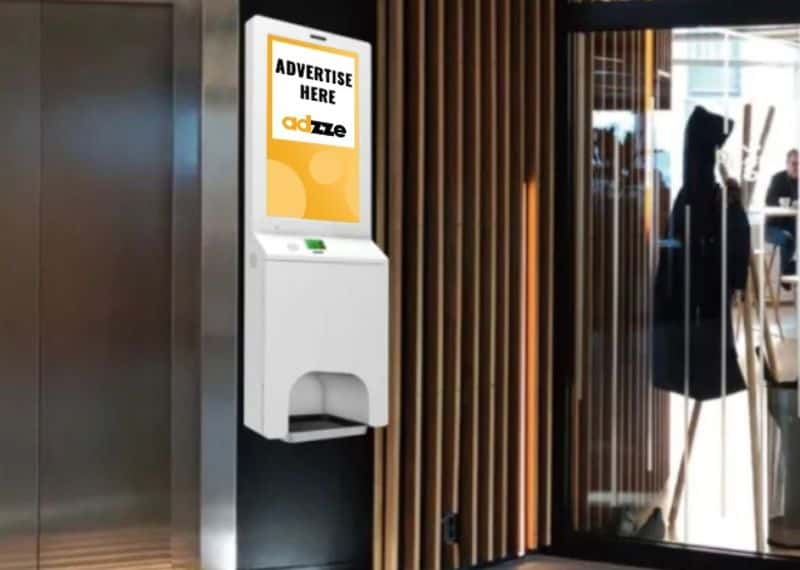In the ever-evolving world of marketing, businesses are continuously searching for new and effective ways to engage consumers. One innovative approach that has gained traction in recent years is hand sanitizer display advertising. These displays, often placed in high-traffic areas such as shopping malls, airports, and healthcare facilities, offer a dual-purpose solution—promoting hygiene while simultaneously serving as advertising platforms.
While the benefits of visibility and positive brand association are evident, marketers need concrete metrics to assess the true effectiveness of hand sanitizer display advertising. This blog will explore key methodologies for measuring consumer behavior, tracking engagement, and optimizing campaigns to maximize ROI.
Understanding Consumer Interaction with Hand Sanitizer Display Advertising
Unlike traditional billboards or digital ads, hand sanitizer display advertising offers a unique advantage: consumers are naturally inclined to interact with the display due to its primary function—dispensing hand sanitizer. This interaction creates an organic opportunity for brands to capture attention and influence consumer behavior.
Key Metrics to Track:
Dispensing Rate: The number of times sanitizer is dispensed can indicate foot traffic and potential ad exposure.
Dwell Time: Measuring how long consumers remain near the display provides insight into engagement levels.
Conversion Rate: If the ad includes a QR code or call-to-action, tracking conversions (such as website visits or coupon redemptions) is crucial.
Repeat Engagement: Monitoring whether the same consumers interact with the display multiple times helps gauge retention and long-term impact.
Leveraging Technology for Data Collection and Tracking
To accurately measure the impact of hand sanitizer display advertising, marketers can integrate various tracking technologies. These tools provide valuable data on consumer engagement and help optimize ad campaigns.
Effective Tracking Methods:
QR Codes and NFC Tags: Placing scannable QR codes or NFC tags on the display allows brands to direct users to landing pages, collect data, and measure conversion rates.
Motion Sensors and AI Analytics: Advanced displays equipped with motion sensors can track foot traffic, dwell time, and interaction frequency.
Mobile Geolocation Tracking: By leveraging GPS or Wi-Fi tracking, businesses can determine how many consumers visited a store or made a purchase after engaging with the display.
A/B Testing: Running different ad creatives on separate displays and measuring engagement metrics helps identify which messages resonate best with consumers.
The Psychological Impact of Hand Sanitizer Display Advertising
One of the most compelling advantages of hand sanitizer display advertising is its ability to establish positive brand associations. Consumers subconsciously connect the brand with cleanliness, safety, and responsibility, reinforcing trust and credibility.
Psychological Triggers at Play:
Reciprocity Effect: When consumers receive something of value (free hand sanitizer), they are more likely to respond positively to the advertisement.
Priming Effect: Exposure to hygiene-related messaging before making a purchase can influence buying decisions, particularly in health and wellness sectors.
Reinforcement of Brand Image: Brands that align with cleanliness and care (e.g., pharmaceutical, beauty, and food brands) benefit from heightened credibility when advertising on sanitizer displays.
By understanding these psychological triggers, marketers can craft more effective messaging that resonates with their target audience.
Measuring ROI and Business Impact
While hand sanitizer display advertising is a relatively new concept, businesses must still justify the investment by analyzing return on investment (ROI) and overall business impact.
Key Performance Indicators (KPIs) to Evaluate Success:
Brand Recall and Awareness: Conducting post-campaign surveys can help determine if consumers remember the brand or message after interacting with the display.
Sales Uplift: Comparing sales data before and after running a hand sanitizer display ad campaign can reveal direct correlations between exposure and purchasing behavior.
Social Media Engagement: Encouraging users to share their experience with the display (via hashtags or social check-ins) helps extend the campaign’s reach beyond the physical location.
Customer Feedback and Sentiment Analysis: Monitoring online reviews, social media comments, and direct customer feedback can provide qualitative insights into the campaign’s impact.
Optimizing Hand Sanitizer Display Advertising for Maximum Impact
To ensure hand sanitizer display advertising campaigns are as effective as possible, marketers should implement strategic best practices:
Best Practices for Success:
Strategic Placement: Install displays in high-traffic areas with a high probability of consumer engagement (e.g., mall entrances, event venues, or food courts).
Compelling Call-to-Action (CTA): Encourage immediate engagement by offering discounts, sweepstakes, or exclusive content through QR code scans.
Dynamic Content Rotation: Refresh ad creatives periodically to maintain consumer interest and prevent ad fatigue.
Integration with Broader Marketing Campaigns: Sync sanitizer display ads with ongoing digital campaigns to create a cohesive brand message.
Personalization Strategies: If feasible, use AI-powered digital displays to tailor ad messaging based on consumer demographics and location.








